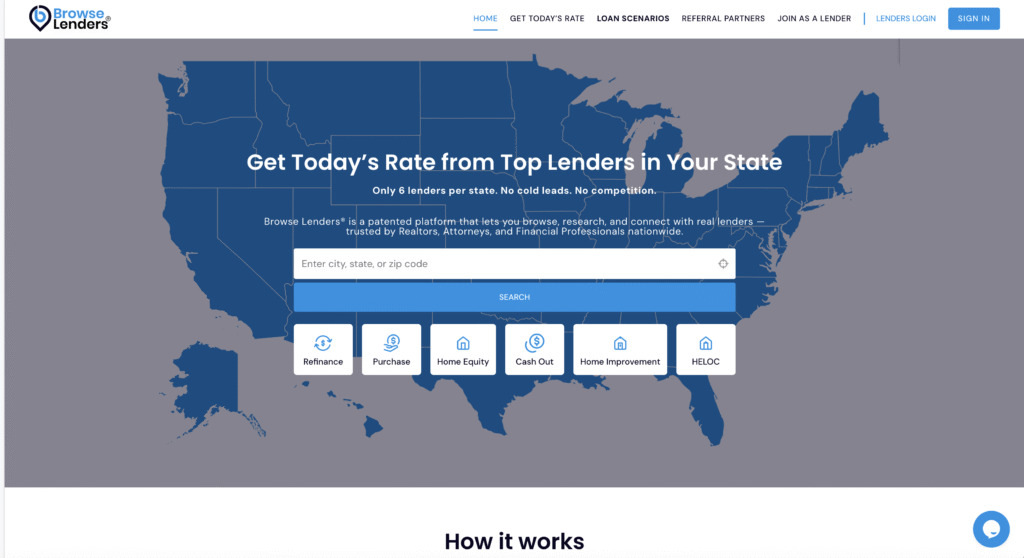THE REAL PURPOSE OF TRACKING DEBT (NOT WHAT MOST CONSUMERS THINK)
Most people believe tracking their debt means knowing what they owe, who they owe, and when the payment is due. That is the consumer view. Institutions do not evaluate debt this way. Lenders do not care about the list — they care about the pattern. They look for the story the debt tells about how you operate, not the debt itself. Debt is not interpreted as obligation — it is interpreted as behavior in motion. The system does not ask “How much debt do they have?” It asks, “How do they behave while carrying debt?” That behavioral reading is what translates into risk interpretation, not the raw balances. The Debt Tracker exists to help you see what underwriting sees — not the dollar amount, but the reliability pattern behind the borrowing.
This is why two people with identical balances are treated completely differently during approval. The difference is not the number — it is the behavior that number implies. One borrower carries debt while signaling stability and planned structure; the other carries debt while signaling reliance and pressure. Tracking debt is not about documenting what you owe — it is about managing what your debt is saying about you.
Until a borrower sees what the pattern communicates, they remain blind to the institutional interpretation, and therefore blind to how their readiness is being judged. Your debt is a narrative. The Debt Tracker shows you whether that narrative communicates control or exposure.
SECTION 2 — WHY THE SYSTEM INTERPRETS DEBT BEHAVIOR BEFORE DEBT TOTAL
Institutions know something most consumers never consider: people do not default because of debt totals — they default because of behavior patterns that signal future strain. Underwriting is a forecasting engine — it is built to detect the signals of loss before loss occurs. That’s why the system looks beyond “how much you owe” and asks whether you appear to be managing debt proactively or surviving through it reactively.
The Middle Credit Score® acts as the anchor for this interpretation because it measures the stability of your relationship to debt, not just the presence of debt. A borrower with $20,000 of debt who is stable looks safer than a borrower with $5,000 of debt who appears unstable. Consumers assume “less debt = less risk,” but institutions know “predictable behavior = less risk.”
This is why the Debt Tracker is essential: if you do not understand what your debt pattern is signaling, you cannot correct the interpretation — and if you cannot correct the interpretation, readiness stalls even if balances shrink.
Debt management is NOT debt reduction. Debt management is signal management. And signal management is what institutions respond to.
SECTION 3 — THE #1 DEBT SIGNAL INSTITUTIONS READ: CONTROL VS. DEPENDENCE
When lenders look at your debt, they are not performing a math test — they are testing for dependency. Dependency is the moment debt shifts from being a financial tool to a financial crutch. When the system detects crutch-like behavior, costs rise automatically. The borrower did not become “riskier” in dollars — they became riskier in interpretation.
The Debt Tracker gives you visibility into the one threshold most consumers never see: Has your debt crossed from “intentional” into “survival”? That threshold determines readiness more than balances or card counts ever will.
Here’s how underwriting breaks this down:
| What Borrowers Think Is Evaluated | What Underwriting Actually Evaluates |
|---|---|
| “How much I owe” | “How I behave while owing it” |
| “Did I make my payment?” | “Did I rely on credit to stay afloat?” |
| “Is my balance lower?” | “Is the reduction predictable or desperate?” |
| “I haven’t defaulted” | “Are you trending toward needing to?” |
Consumers measure responsibility by payment obedience.
Institutions measure responsibility by behavioral predictability.
This is the difference between score movement and readiness movement.
SECTION 4 — WHY DEBT PATTERNS SHOW UP IN YOUR MIDDLE CREDIT SCORE® BEFORE YOU FEEL THE CONSEQUENCE
The Middle Credit Score® is not just influenced by debt — it is shaped by the way you carry the debt. When patterns suggest strain, the score anticipates future instability before you actually experience financial fallout. This is why someone can feel “fine” financially while the system is already downgrading their future trust picture.
Most people think their score is reacting to the past. It is reacting to the trajectory. If your pattern predicts stress, your score shifts downward as a precaution — before stress becomes default. That is not a penalty — it is a forecast. And forecasts are always behavioral, not emotional.
The borrower says:
“I’m handling it.”
The institution asks:
“But for how long?”
This is why debt must be tracked strategically, not recorded casually. The system is not responding to what you owe — it is responding to what your trajectory suggests you will need.
By tracking this correctly, you stop being surprised by outcomes. You start seeing the future the way the underwriting engine sees it.
The power of tracking debt the right way is not in seeing balances — it is in seeing interpretation before underwriting assigns it to you. When you know how your pattern will be read, you can reposition before the system locks you into the outcome.
Compare the difference:
| Without Debt Tracking | With Strategic Debt Tracking |
|---|---|
| You react to what lenders decide | You anticipate what lenders will decide |
| You discover the problem after denial or high-cost approval | You correct the problem before applying |
| You believe debt is the issue | You see pattern is the issue |
| You focus on payoff | You focus on stability signal |
| You hope your score is “good enough” | You engineer readiness |
Most consumers never realize that being “not ready” is not about the amount of debt — it’s about the timing, structure, and direction of that debt. The Debt Tracker forces visibility into trajectory — the one thing underwriting uses that consumer credit systems never show you.
A small balance carried badly looks worse than a larger balance carried strategically. This is the part of credit most people never learn — because they are taught to reduce debt, not to manage debt as a stability signal.
Once you begin tracking debt as signal instead of balance, you begin controlling the interpretation that controls your outcome.
SECTION 6 — THE HIDDEN FACTORS LENDERS READ INSIDE YOUR DEBT PATTERN
Underwriting reads your debt through four hidden behavioral filters:
| Institutional Filter | What It Measures | What It Indicates |
|---|---|---|
| Capacity | Your unused room | Stability margin |
| Direction | Whether balances are trending up or down | Future risk outlook |
| Pace | Whether changes are consistent or reactionary | Reliability |
| Consistency | Whether you behave the same cycle after cycle | Control vs volatility |
This is why two borrowers with the same total debt are interpreted differently — because underwriting is not seeing dollars, it is seeing behavioral trendlines.
To the consumer, debt is a payment.
To underwriting, debt is a forecast.
If that forecast signals strain, cost goes up.
If that forecast signals control, cost goes down.
The Debt Tracker turns the invisible interpretation layer into something you can see and correct before applying — which is exactly what moves you from exposure to leverage.
SECTION 7 — MISTAKES THAT DESTROY LEVERAGE (AND WHY MOST PEOPLE NEVER SPOT THEM)
Most borrowers unintentionally weaken their lending position because they focus on payoff instead of pattern signaling. These are the most damaging mistakes underwriting flags immediately:
| Mistake | What Consumer Thinks | What System Concludes |
|---|---|---|
| Paying erratically | “I’m trying to catch up” | Volatility is increasing |
| Dropping big lump sums | “I’m fixing it fast” | Desperation / instability |
| Ignoring small debts | “They’re not a big deal” | Inability to complete obligations |
| Paying only minimums | “I’m maintaining” | Pressure + stalled recovery |
| Letting balances creep | “I’ll fix it later” | Declining capacity trajectory |
These are not mathematical mistakes — they are signal mistakes.
The borrower is thinking transactionally.
The system is reading behaviorally.
When you don’t track debt correctly, you lose leverage before you even apply, because the system classifies you based on forecasting, not status.
SECTION 8 — HOW TO USE DEBT TRACKING AS A READINESS TOOL (AND LEVERAGE CONVERTER)
Debt tracking is not bookkeeping. It is pre-underwriting positioning. The goal is not to see what you owe — it is to shape how your obligations will be interpreted when it matters. This is why tracking debt the right way is the bridge between “improvement” and readiness.
The Debt Tracker allows you to:
- See how your debt signals will be read before they are judged.
- Identify whether the system currently reads you as stable or strained.
- Restructure timing, pacing, and directional signals so the interpretation shifts.
- Confirm the shift before entering an application pipeline.
- Apply only when the pattern, not just the score, communicates readiness.
Once the system recognizes signal control, your Middle Credit Score® reflects real stability — not just score movement. That stability is what leads to lower rates, better offers, reduced friction, and borrower-led choice instead of lender-governed outcome.
Correct debt tracking is how you convert obligation into leverage. Without this step, borrowers try to improve from the outside in. With this step, borrowers improve from the inside out — which is the only improvement underwriting rewards.
This is the moment where readiness begins shifting from personal progress to institutional recognition.
And once readiness is recognized — access expands.






